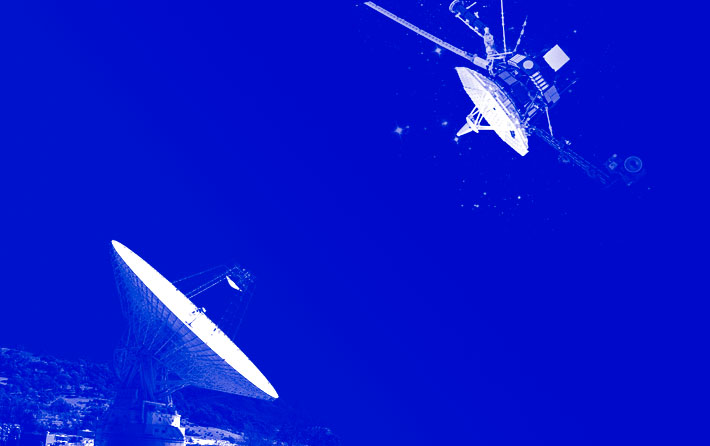Deep space communications
The site https://wirelesstechnology.site is dedicated to wireless technologies and devices. Now we will briefly consider wireless technology, which in practice provides the longest two-way communication using two devices created by people.
DSS-43 as an example of communication at a distance of more than 12 billion miles
Since 1977, NASA, using wireless technology, has been remotely interacting with the Voyager 2 spacecraft, which has moved away to a distance of more than 12 billion miles. This is very far. For example, the XMM-Newton telescope is 60 thousand miles away. The distance to the Moon is 239 thousand miles.

Voyager 2's journey continues with adventures, sometimes communication with it is lost, sometimes there is not enough generated power, sometimes there are problems with the equipment. For example, in 1989, Voyager 2, flying near the planet Neptune, changed its trajectory and lost visibility with all radio antennas in the Northern Hemisphere.
Antenna DSS-43 as it is
Today, communication with Voyager 2 is provided by a single antenna, DSS-43, an element of the NASA Deep Space Network. The Deep Space Station antenna is the largest in the entire Southern Hemisphere and is located at the CDSCC communications complex near Canberra, Australia. This parabolic radio antenna with a diameter of 230 feet is of the Cassegrain type and has an excellent gain of up to 80.1 dB and a narrow directivity. The antenna mirror must be precisely directed at a specific point, a deviation of even hundredths of a degree will lead to an error of thousands of miles. The positioning accuracy of DSS-43 is 0.005 degrees. The signal transmission power is 18-20 kW, up to 400 kW at most. The larger the aperture of the mirror, the more powerful the electromagnetic signal will be. The DSS-43 antenna weighs 3,000 tons and has a surface area of 45,000 square feet (4,180 square meters), which is about half the size of a football field.
The Largest Space Radio Antennas
The NASA CDSCC communications complex in Canberra is part of the Deep Space Network. This network includes two other large antennas with a 230-foot mirror: In Goldstone, California (USA) - DSS-14, In Madrid (Spain) - DSS-63.
The largest space radio antenna, the Very Large Array, consists of 27 radio telescopes operating as one complex antenna, is located in the state of New Mexico (USA). 27 radio telescopes, 82 feet in diameter, are spread over an area with a diameter of 22 miles.
Operating principle of parabolic radio antennas
The operating principle of parabolic radio antennas is based on double reflection, similar to a telescope used to watch your neighbors. When a signal is received, the electromagnetic wave hits the main mirror, is reflected by the secondary mirror, and hits the receiver. The signal is filtered, amplified, and processed. The signal is transmitted in the opposite direction. Coming out of the emitter, the electromagnetic wave of a signal of a certain power and frequency hits the secondary mirror and is reflected from it. Then the electromagnetic wave is reflected again by the main mirror and is concentrated in a given direction.

